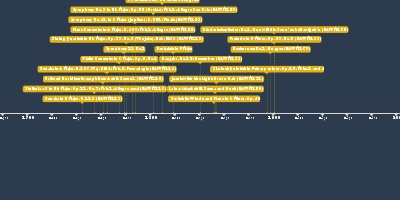jan 1, 1786 - Piano Concerto in A Major, K. 488: Mvt. 1, Allegro (NAWM 122)
Description:
Composer: Wolfgang Amadeus MozartGenre: Piano Concerto
Classic-period concertos tend to combine the strengths of both its relatives, resulting in increased coherence among the solo passages (in comparison with the Baroque concerto) and providing a wider variety of resources for color, drama, and dialogue (in comparison with the sonata).
Mvt. 1 (Allegro):
Combined aspects of sonata and ritornello form, yet also introduced serval unique elements. A ritornello is like a rondo, but the A theme is brought back in segments or in different keys.
Opening
The movement opens with a symphonic or orchestral exposition, presenting a first theme, second theme, and closing theme with contrasting orchestral color, including expressive passages for winds alone. This is a baroque ritornello, in which parts of a section (the symphonic exposition, in this instance) in a single key later return in other various keys.
First solo episode
The solo pianist now gets an exposition. Follows the same sequence as the opening ritornello but modulates to the dominant for the second theme (instead of remaining in the tonic).
Second solo episode
This is akin to the development section of a symphony. A favorite technique of Mozart's, he varies a new theme just introduced by the orchestra rather than anything found in the expositions. This section culminates in a 20 measure pedal point on the dominant.
Third solo episode
All of the material is in the tonic, but the end of this solo section expands on the new theme introduced during the somewhat developmental second solo episode.
Added to timeline:
Date:
jan 1, 1786
Now
~ 239 years ago
